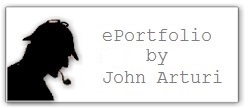Although this list would most likely be useful for those in the medical profession, it should not stop the novice researcher from exploring it. I was able to get some useful information about the brain by compiling this list and reading some of the resources listed. Some of these sources are specifically for the individual interested in neuroscience. Some of them would be of more interest to a practicing neuroscientist, although if the individual progressed in their study of this field,they might move on to the more complicated material.

Image courtesy of Shutterstock
Neuroscience Book Selection
Neuroscience in Medicine: Michael P. Conn.
A review of this book notes that it "...brings together 33 chapters by neuroscience, neurosurgery, neurobiology, and other researchers and educators from the US who discuss brain functions at the cellular and molecular level, for medical students and allied health professionals"(Sci Tech Book News 2008). The review also states that this version of the title has recently been edited and made current. In addition,the book also has a CD ROM which "...contains an interactive atlas of the human brain". This is helpful so the student is not forced to go online looking for such material. We should hope however that there are not many titles like this book. The price is $169.00! Perhaps it is best to leave this title in reference.
Conn, P. Michael and P. Michael Conn. 2008. Neuroscience in Medicine. Totowa, NJ: Humana Press. Book Index with Reviews,EBSCOhost (accessed October 2,2010). Sci Tech Book News. Review of Neuroscience in Medicine,by Michael P. Conn. Sci Tech Book News. December 1,2008. Book Index with Reviews,EBSCOhost(accessed October 2,2010).
Origins of Neuroscience: A History of Explorations into Brain Function: Stanley Finger.
As you search the many books available regarding the brain, it is important to be mindful of the general idea which ties all your sources together. In this case it would be both the past and present information about neuroscience and the functions of the parts of the brain. The review of title lists the contents of the book which include: The history is divided into six parts that consider the evolution of theory of localization of function; the history of sleep,dreaming and the emotions;the brain's higher functions,including the neurobiology of learning and memory disorders;(Sci Tech Book News 2001). Although this title was originally published in 1994 and the review is of a reprint (Sci Tech Book News 2001),I believe it would be helpful for any researcher to have a book which includes a history of neuroscience. While the book is somewhat expensive at $46.95,it is not excessive for the library to afford. This title is listed in the bibliography of the next book I will describe for inclusion into our collection.
Finger,Stanley. 2001. Origins of Neuroscience: A History of Explorations into Brain Function. New York: Oxford UP. Book Index with Reviews,EBSCOhost (accessed October 3,2010). Sci Tech Book News. Review of Origins of Neuroscience: A History of Explorations into Brain Function. Sci Tech Book News. January 1,2001. Book Index with Reviews,EBSCOhost (accessed October 3,2010).
Brainscapes: Richard Restak, M.D.
This is an excellent book that the library will not regret in purchasing. According to the information offered about the author, Dr. Restak is "...a neurologist...one of the nation's leading experts on the brain and serves on the advisory councils of the National Brain Tumor Foundation; Office of Interdisciplinary Studies-The Smithsonian Institute;". The book is 135 pages. The language is slightly elevated, but not too erudite as to turn off some readers. The author uses many examples in order to illustrate points about how the brain works. The title of the previous book I examined is listed in the bibliography of Restak's text.
Restak,Richard M. 1995. Brainscapes: An Introduction to What Neuroscience has learned About the Structure, Function, and Abilities of the Brain. New York: Hyperion.
Gray's Anatomy of the Human Body:Henry Gray
In Doctor Restak's book "Brainscapes" the author refers to his description of the brain as a "...useful Baedekers to the brain's geography:..."(1995,12). If Restak functions as Baedekers in his description, Gray is a combination of museum guide and Oxford English Dictionary in his descriptions of the brain. In order to understand Gray,the reader MUST have some knowledge of medical terminology. Knowledge of ancient Greek and Latin would be helpful as well. Gray is a meticulous tour guide of the brain. The illustrations provided in his book are helpful in that they help the reader orient himself or herself to the perplexing detail provided.
Gray, Henry. 2000. Anatomy of the Human Body. 20th ed. Thoroughly Revised and Re-Edited by Warren H. Lewis. Illustrated with 1247 Engravings. New York:Bartelby.com. (Orig. Pub 1918 Philadelphia: Lea & Febiger). http:www.bartelby.com/107/. (accessed Oct. 5,2010).
Basic Concepts in Neuroscience: A Student's Survival Guide. Edited by: Malcolm Slaughter
This text provides the clearest explanations of synapses and neurotransmitters that I have encoutered in my research. The book is brief, and does not overwhelm the reader with medical jargon. I found myself wanting to read more of this text, because I was able to understand the authors and the illustrations in the text were quite helpful.
Basic Concepts in Neuroscience: A Student's Survival Guide. Edited by: Malcolm Slaughter. 2002. New York: McGraw-Hill Medical Publishing Division.
Neuroscience: Alan Longstaff
The review of this book notes that it is a "...second edition of a study guide for medical students of neurscience..."(Sci Tech Review 2006). While that might scare away some patrons, we have to make sure that our collection does not consist solely of beginner texts. The review also reports that the book contains information,"...on areas such as neuron excitation, synapses, neural coding, memory and cognition and brain disorders"(Sci Tech Review 2006). Concerning the qualifications of the author,the review states that Alan Longstaff,"...is a neuroscience lecturer(Sci Tech Review 2006). The book is $40.00. This is an average price.
Longstaff, Alan. 2005. Neuroscience. New York: Taylor & Francis. Book Index with Reviews,EBSCOhost (accessed Oct. 3 2010). Sci Tech Book News. Review of Neuroscience,by Alan Longstaff. Sci Tech Book News. March 1,2006. Book Index with Reviews, EBSCOhost(accessed Oct. 3,2010).
The Brain:A Neuroscience Primer: Richard F. Thompson
I selected this book because it gives a succinct explanation of the major areas of the brain. It also provides a detailed drawing illustrating how a synapse works(Thompson 1993,36). The author,"...is Keck Professor of Psychology and Biological Sciences and director of the Neurosciences Program at the University of Southern California,Los Angeles"(About the Author,cover 1993).
Thompson, Richard F. 1993. The Brain:A Neuroscience Primer. 2nd ed. New York: W.H. Freeman and Company.
Neuroscience Online Selection
Society for Neuroscience (www.sfn.org)
The first goal of the Society for Neuroscience is listed in their mission statement:"Advance the understanding of the brain and the nervous system by bringing together scientists of diverse backgrounds, by facilitating the integration of research directed at all levels of biological organization,and by encouraging translational research and the application of new scientific knowledge to develop improved disease treatments and cures"(SfN Society Mission accessed October 4,2010). The Society for Neuroscience website is practically a digital library of neuroscience information. Some of the resources of the site are: Classic Papers: This area of the site has, "...access to a sample of high impact classic papers addressing a range of neuroscience topics". Some of these topics include: emotion, hormones, and language. There is also a section titled, "Autobiographical Videos". The website lists it as:"To capture the lives and discoveries of eminent senior neuroscientists, SfN has made its collection of videos from The History of Neuroscience in Autobiography series available online"(accessed Oct. 7,2010).
Brain Facts: A primer on the brain and nervous system. Society for Neuroscience. 2008. http://www.sfn.org/skins/ main/pdf/brainfacts/2008/brain_facts.pdf. (accessed September 19,2010).
The DANA Foundation (www.dana.org)
The "Overview" on the DANA website proclaims, "The Dana foundation is a private philanthropic organization that supports brain research through grants and educates the public about the successes and potential of brain research"(accessed Oct. 7,2010). The main focus of the DANA foundation appears to be psychology and psychiatry and their relation to the brain. For someone who wanted a highly scientific analysis and commentary about the brain, I would direct them to the Society for Neuroscience website. For someone who wanted information about the brain and memory, ADHD or PTSD, I would direct them to the DANA site. There is a magazine named "Cerebrum: The magazine that can change your mind". Some recent articles of this publication include, "Enchancing Brains: What are We Afraid Of?"(Greely,July 2010) and "Uncovering Awareness: Medical and Ethical Challenges in Diagnosing and Treating the Minimally Conscious State"(Bruno and Laureys,June 2010). In addition there is an area titled "The Brain Web & Brain Information". It is noted that "Brain Web provides information and links to validated sites about brain diseases and disorders. These include outside resources reviewed by scientific advisors, as well as articles in Dana publications". Some of the subjects include: "Memory, Pain, Multiple Sclerosis, Spinal Cord Injury,etc"(accessed Oct. 7,2010 ).
The DANA Foundation. "Your gateway to information about the brain and brain research". http://www.dana.org(accessed Sept. 19-Oct. 7,2010).
- E-Portfolio Introduction
- Reflective Essay
- I. Need Information?
- II. Ethics
- III. Westlaw Research Paper
- IV. Neuroscience Resources
- V. Print or Electronic Serials?
- VI. Project Muse
- VII. Zoroastrianism
- VIIII. Bureaucracy and Scientific Management
- IX. For Further Research: Goldman Sachs
- X. Letters From An American Farmer: Bibliographic Description
